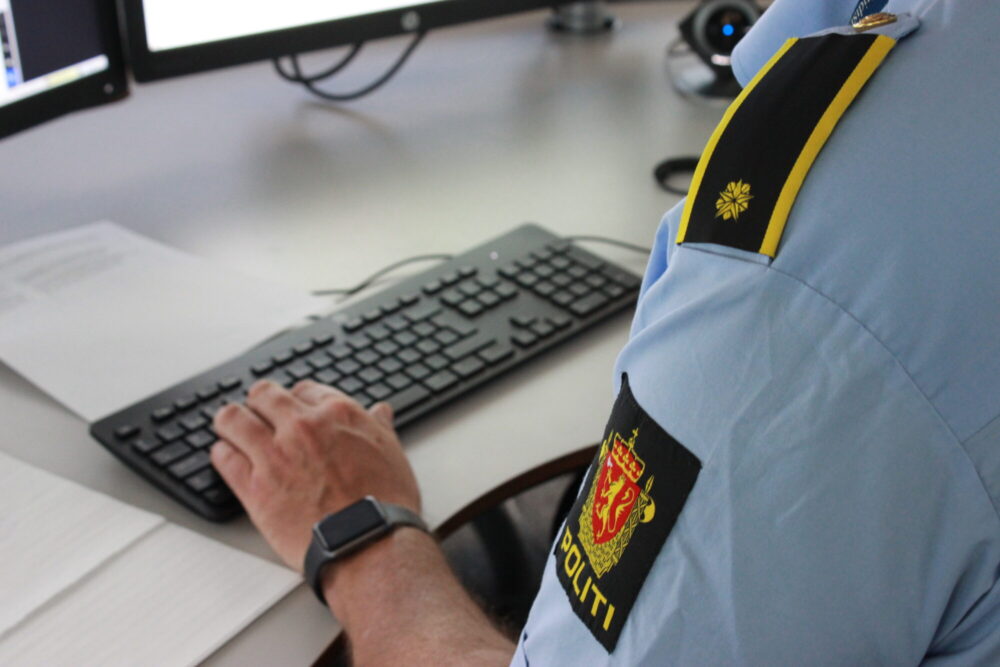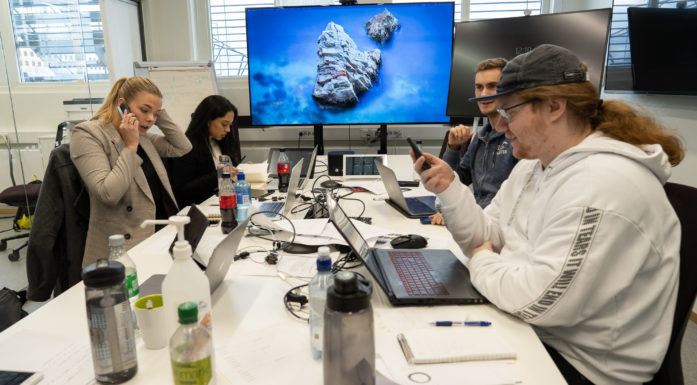Reporting findings of online abuse material not required by law
Online abuse of children has increased considerably in recent years. Technological advances and inadequate legal regulation are driving this development, according to a new Norwegian report.
One million discoveries of abuse material were reported to the National Center for Missing and Exploited Children (NCMEC) in 2010.
Over the next nine years, the number increased to approximately 17 million. And in 2021, the American organization received about 30 million inquiries.
“These figures only reflect the cases that were reported,” says Jan William Johnsen. He is a researcher at the Department of Information Security and Communication Technology at NTNU in Gjøvik.

Jan William Johnsen is one of the authors of the report on the sexual exploitation of children online. Photo: Guro Wang/NTNU
“These figures are probably only the tip of the iceberg. When thousands of hours of video are produced every minute, it goes without saying that the full extent of abuse material in circulation is challenging to estimate.”
- You might also like: Algorithms can prevent online abuse
Report to the Ministry of Justice and Public Security
NTNU and BI Norwegian Business School have mapped how new technology affects the production and dissemination of child abuse material. They drew up a report entitled “Online Child Sexual Exploitation,” which they have handed over to the Norwegian Ministry of Justice and Public Security.
Johnson authored the report with Matilda Dorotic, an associate professor at BI Norwegian Business School.
“There’s little doubt that computer technology development has brought tremendous advantages in the last few decades,” says Johnsen.
A few years ago, law enforcement identified 80 per cent of the perpetrators, whereas today the proportion has dropped to 40 per cent.
“At the same time, the developments have facilitated more efficient and difficult-to-trace ways of sharing abuse material,” says the NTNU researcher.

You would think that law enforcement would be able to track down more abusers with today’s computer technology. But that’s not the case. Photo: Eli Anne Tvergrov
One of the report’s interviewees estimates that a few years ago law enforcement identified 80 per cent of the perpetrators. Today, the proportion has dropped to 40 per cent. This development can be attributed largely to the increased use of virtual private networks, cryptocurrency and anonymity networks like TOR, according to the report.
Sixty per cent of world’s child abuse material is stored on European servers
The report also addresses several legal issues that complicate the fight against online-related abuse of children.
“Companies in the USA are required by law to report the discovery of abusive material on their platforms to the NCEMC,” says Johnsen. There are no corresponding legal orders in Norway or in the rest of Europe. This means that law enforcement is completely dependent on the companies’ voluntary efforts in the fight against online-related abuse of children.
“What becomes problematic is when not all companies are aware of or care that much about the issue,” he says.
This lack of oversight has contributed to European servers becoming a favourite repository for abuse material. Today, over 60 per cent of the world’s child abuse material is estimated to be stored on European servers.
The report authors therefore strongly recommend that European countries should also require technology companies not only to report, but to actively search for abusive material on their platforms.
Three trends stand out
Technological advances have given abusers new ways to reach out to more children. The report points to three trends in particular that are shaping the fight against sexual exploitation of children online:
- Increase in self-produced abuse material
- Live streaming of abuse
- Artificially generated content
“Not only can abusers today contact hundreds of children at once. With the help of advanced machine learning technology, they can also pretend to be age peers in ways that are very difficult to detect,” says Johnsen.
Self-produced abuse material is defined as sexualized images or videos that are created, transmitted or shared by minors themselves.
A survey from 2021 revealed that over 70 per cent of the reviewed abuse material that year fell into this category.
750 000 active child seducers at any given moment
The extent of self-produced abuse material increased dramatically during the COVID-19 pandemic. All of the report’s interviewees refer to this development as highly disturbing.
Half of Norwegian teenagers between the ages of 13 and 18 have been asked to share nude pictures of themselves.
Around 750 000 offenders are online at any given moment with child seduction as their purpose.
At the same time, a sharing culture is emerging among children and young people that is normalizing the sharing of sexualized content with each other.
The Norwegian Media Authority states, for example, that half of Norwegian teenagers between the ages of 13 and 18 have been asked to share nude pictures of themselves.
Live streaming abuse from developing countries
The increase in self-produced abuse material can mainly be attributed to two factors.
- Children’s social everyday life is increasingly shifting to digital arenas.
- The availability of mobile devices with fast internet and good cameras has increased considerably.
The latter in particular has also contributed to spreading the live streaming of sexual abuse material – especially in developing countries.

Technology that is fast and effective likely contributes to increased sexual abuse of children. Illustration photo: Colourbox
“This kind of abuse becomes difficult to detect with the methods currently available when streamed material is encrypted and leaves few traces,” says Johnsen.
Online predators thus find ordering live streamed abuse material from developing countries an attractive option. One in five children between the ages of 12 and 17 in the Philippines was reported to have been sexually assaulted online in 2020.
- You might also like: Using the internet to identify signs of depression in young people
Facilitating closer cooperation
Although digital solutions exacerbate the problem of sharing and distributing abuse material, Johnsen is clear that technology also represents an important part of the solution.
“Using technology that makes it possible to search large volumes of data in a short time is the only way forward,” he says.
The researcher nevertheless emphasizes that no purely technical solution can solve the problem.
“Without putting into place the necessary legal framework for better cooperation between police units and service providers across countries, all the technology in the world won’t end the problem.”
The Norwegian report is below:
Dorotic, Matilda; Johnsen, Jan William: Seksuell utnyttelse av barn over internett – Rapport om analyse av teknologiske faktorer som påvirker produksjon og deling av materiale som seksuelt utnytter barn over internett





